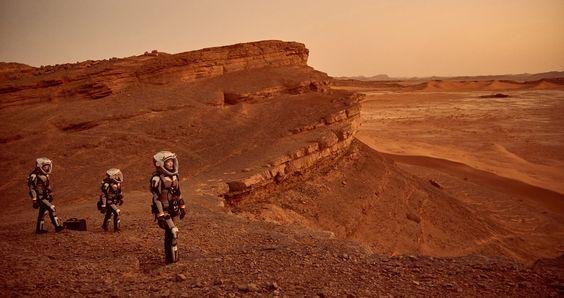
"It was a machine that looked like a green jade insect, a praying mantis that rushed delicately into the cold night air (...) The six legs landed on the old road like the last drops of a rain and from the back of the machine a Martian with eyes of molten gold looked at Thomas as if he were looking into a well ... "
This episode was narrated by the writer of science fiction, Ray Bradbury in his text "Martian Chronicles". A vision motivated by the concern to know what life would be like on other planets; questioning that man has been made since he became aware of his place in the world.
As a possible answer to such a question, the National Aeronautics and Space Administration (NASA) has declared that the first encounter with extraterrestrial life (so many times imagined by the scientific community and the world in general), may not look like in nothing to what has been imagined.
Television series, as well as movies and literature, have fantasized for a long time with the first alien contact. However, the reality suggests a very different version to what has been shown in "Star Wars", "Star Trek", "Super 8", "E.T.", "Stranger Things", or even The Simpsons. According to Ellen Stofan, head of scientific research at NASA, the encounter with the first alien would not correspond to any of those visions.
What would extraterrestrials be like, if they existed?
"Most people have a wrong conception when they hear about the possible existence of life on another planet. Most expect to see little green men or something very similar to the image of E.T., but in reality we are talking about finding life on the surface of Mars, perhaps in the oceans of Jupiter's moons ... "
When speaking of the existence of life on other planets, oceans and rivers are obligatory references due to the properties they suppose for the development of organisms inside them. Small crustaceans, microbes or bacteria are some of the options to be found by scientists, which would be a spectacular evidence for historical records.
"In its beginnings, life on planet Earth was carried by unicellular organisms that later gave rise to multicellular organisms, and life began to develop for more than a million years, so it takes much more time to that is believed so that life in this type of places develops as much as we suppose and establish the necessary conditions to establish a complex lifestyle ... "
Animal species such as cows, fish, and even the human being, are the result of billions of years of genetic and cellular evolution. Therefore, when scientists and astronauts enunciate their aspirations to find life in other corners inside and outside the solar system, they refer to small life forms.
What follows after finding life on other planets?
Once the long-awaited meeting is carried out, the questions would increase the number of investigations carried out. How is your cell composition? Do they have DNA, or some similar substance? There would be some questions to answer with all the studies that would arise next.
It seems that the microscopes would be the necessary tool to observe the first "extraterrestrials" known by the human being. So the next time a discussion gets out of control because of the fanatics who defend the aspect of allien as one of the possible options to find in the first manned trip to Mars, you can smile confidently: the ways of life out there are not necessarily monstrous, but extremely powerful.